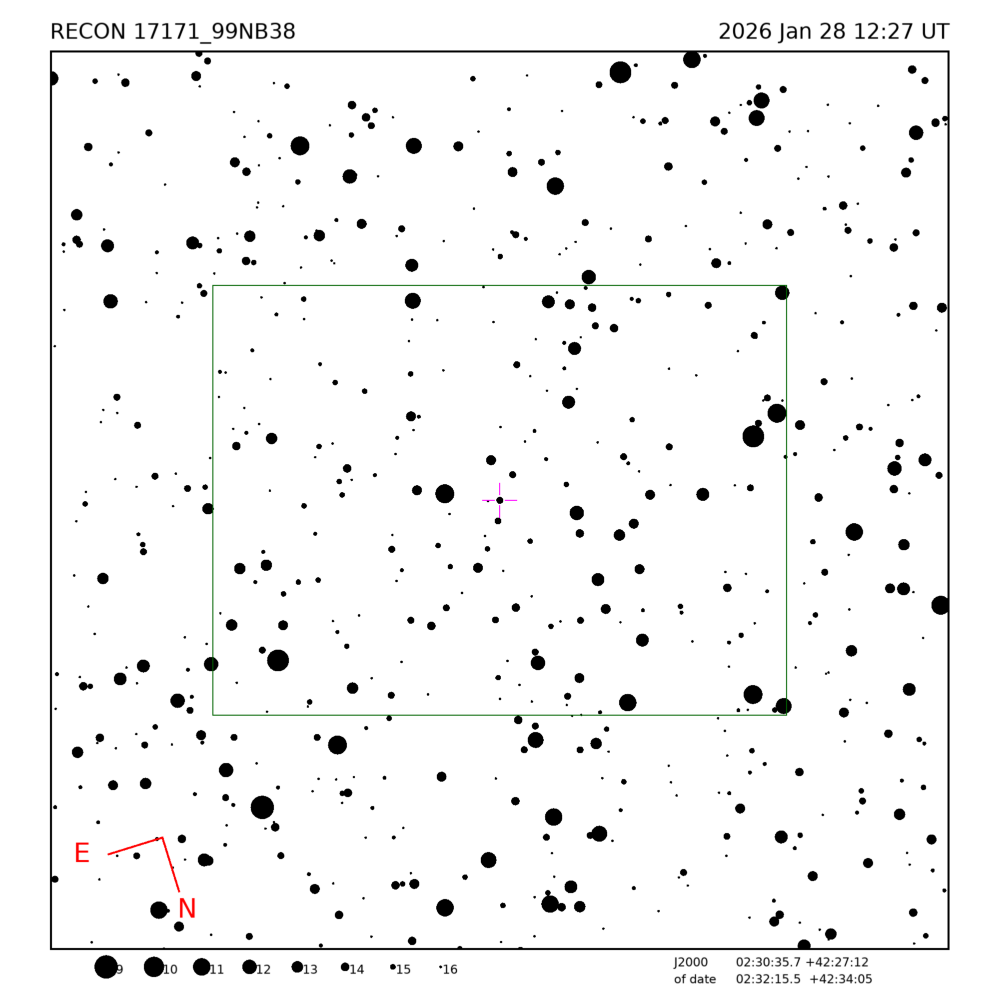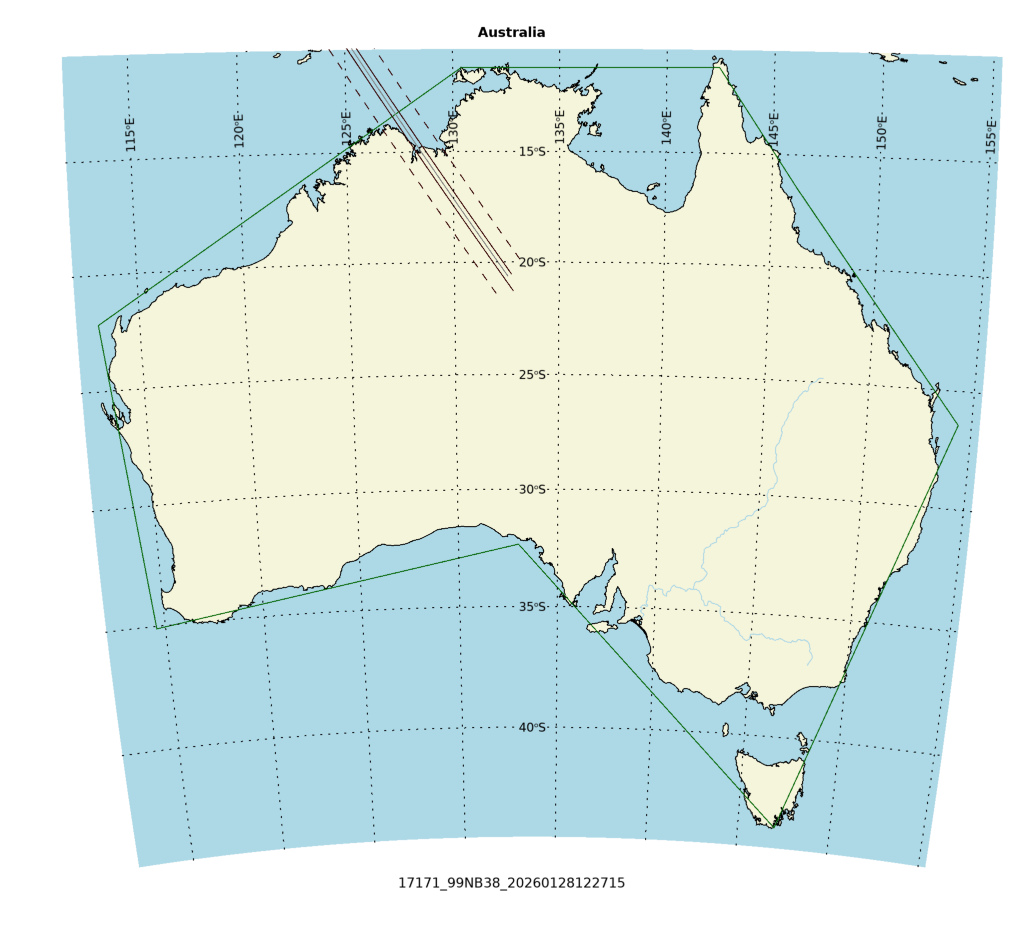
Occultation event with (17171) 99NB38, event index number 3180
Regions able to see the event: Australia
Geocentric closest approach at 2026/01/28 12:27:15 UTC
J2000 position of star is 02:30:35.7 +42:27:12
Equinox of date position of star is 02:32:15.5 +42:34:05
Star is 28 degrees from the moon. Moon is 76% illuminated.
Stellar brightness G=14.7, apparent brightess of occulting body is G=16.1
Use an exposure time of 0.60 seconds with the standard RECON-QHY system.
SNR of 9.6 per integration for unocculted signal
Expected flux drop is 78% with SNR of 7.5 for the occulted depth (per occulted point)
Apparent velocity is 14.8 km/sec on the sky relative to the star, or, 14.9 arcsec/hr.
Position angle of asteroid motion is 132.0 degrees
The recommended exposure time corresponds to 8.9 km per image.
The 1-sigma error in the time of the event is 0.7 seconds.
The 1-sigma cross-track error in the shadow position is 25.6 km.
The sky-plane scale is 3587.3 km/arcsec.
Diameter estimates:
46.1 km assuming a 5% albedo, maximum of 3.1 sec for a central chord
18.8 km assuming a 30% albedo, maximum of 1.3 sec for a central chord
Cross-track diameter of 40.9 km used for deployment plan.
Star training set for 17171_99NB38, (2026/01/28 12:27UT) Object RA Dec mag sep mel Aldebaran 04:37:25.2 +16:33:34 0.8 37.25 11 57Gam1And 02:05:30.7 +42:27:13 2.3 4.93 33 PPM 045035 02:24:28.3 +41:30:47 6.1 1.79 29 PPM 045165 02:33:06.8 +42:40:38 7.6 0.19 28 PPM 045141 02:31:33.5 +42:34:30 9.8 0.13 28 17171_99NB38 02:32:15.5 +42:34:05 16.1 28 Positions are for equinox of date


Star training set for 17171_99NB38, (2026/01/28 12:27UT) Object RA Dec mag sep mel Aldebaran 04:35:55.4 +16:30:29 0.8 37.25 11 57Gam1And 02:03:54.1 +42:19:46 2.3 4.93 33 PPM 045035 02:22:50.1 +41:23:44 6.1 1.79 29 PPM 045165 02:31:26.9 +42:33:47 7.6 0.19 28 PPM 045141 02:29:53.7 +42:27:36 9.8 0.13 28 17171_99NB38 02:30:35.7 +42:27:12 16.1 28 Positions are for J2000